As a photographer I have been asked several times this question. Are exhibitions worth it? Does all the effort put in compensate the intense work to prepare it?
Well, in the end it definitely does. And here are the reasons why:
- After working hard on a project, you can finally get it out there and see the results of all the hard work.
It usually starts with an idea, followed by a long process to transform the idea into the story you want to tell. There will be obstacles along the way and you will have to adapt. But there is no feeling like when you see it come to life. You can finally breathe and let go.
- You get feedback from a variety of different people.
The interaction with the people that come and see your work is priceless for me. I appreciate the feedback good or bad and like to answer doubts or questions. I think it makes me a better photographer.
- The more you exhibit, the better you become and can learn from past mistakes.
There is a lot of effort put into an exhibition. In my case I not only had to worry about the space, printing, framing but also about the rules of the country I was living in, Iran. Your concept and pictures need to be “approved” and you always have to count on last minute hurdles.
To better explain how it all works, I thought I would tell you a bit about my last exhibition called Swallow and show you the behind the scenes to set up the exhibition.
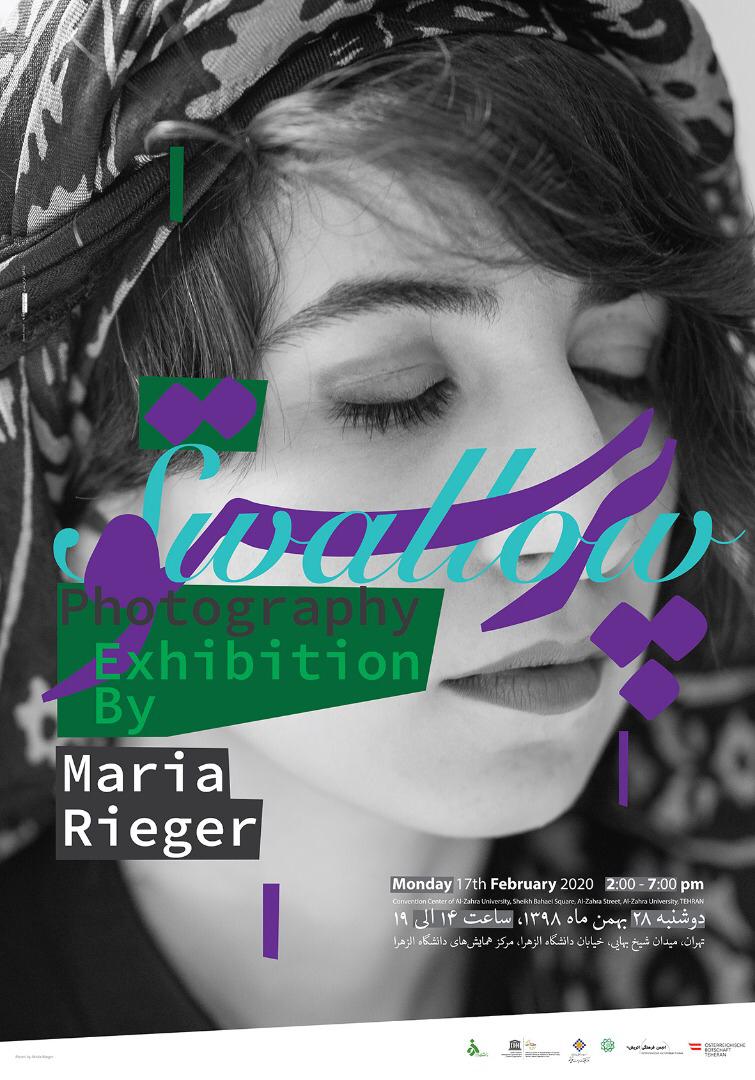
My initial project had been to photograph male and female musicians and to have them play in the opening, Iranian inspired compositions. It was supposed to open to a mixed audience at the Austrian Cultural Forum in Tehran to celebrate the International’s Women’s day this year.
I started photographing the musicians in a very relaxed atmosphere. I wanted natural light, no flash. The idea was to just tell them to play and don’t mind me much. I worked around them and was starting to be happy with the results.
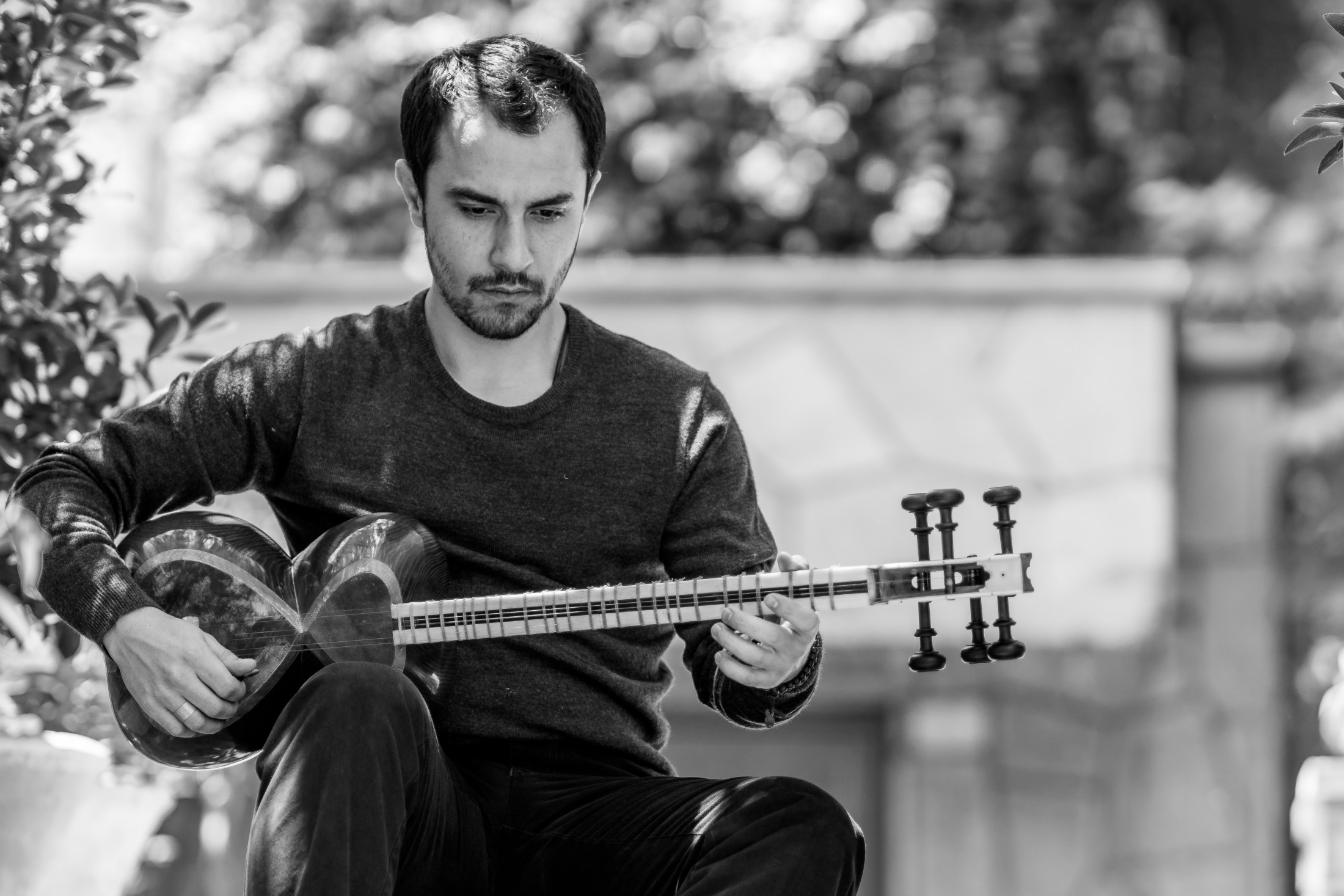
Then the first hurdle came up. The Austrian Cultural Forum decided to organize a women only exhibition, so the direction changed and I concentrated only on female musicians.
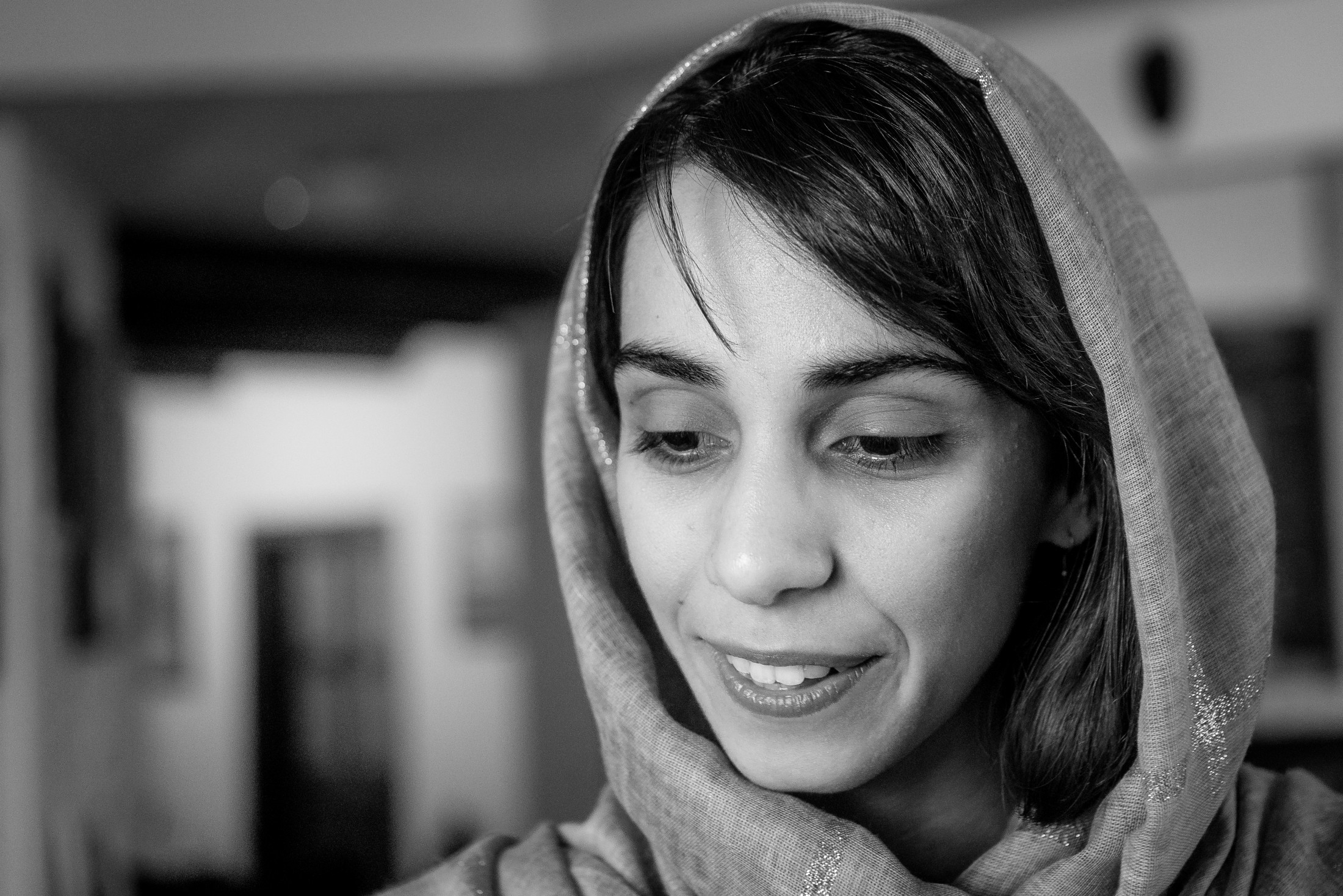
Suddenly, I was invited by the City of Tehran to participate in an International Conference related to the role of women in science in Al-Zahra university. Al-Zahra is an all female university although there are male professors and other male academic staff members.
It was an important International Conference and they wanted a foreign female photographer to participate with an exhibition under the theme “Women in the city”. They already knew my work from my two past exhibitions and decided to invite me.
Due to the pressing deadline, I thought the photographs I had started to take of female musicians were the best option. I proposed it to the city officials and it was warmly accepted.
Later I asked a dear friend, Saeed Ensafi, who is a visual contemporary artist but also a graphic designer to help me because it was someone I trusted and knew I could work with.
So here are some of the things you may have to deal with yourself, if you are not world famous and the venue offered is very limiting:
- Make sure the venue is appropriate for your work.
We had meetings both with the city but also with the university where I was going to set up the exhibition. When they showed me the designated space, I was not very happy. Brown walls don’t really go with black and white pictures.
We asked them instead to build a fake white wall in the shape of an L to put the pictures. Plus we requested that only my exhibition would be set in that space. They agreed to everything. But this is where it gets tricky, people agreeing to what you ask, does not mean they will actually do it.
You always have to be on top of things and make sure things are really advancing.
It was really hard and it took a long time for that wall to go up. I even had to threaten to pull out my exhibition if I didn’t see a wall standing.
- Checking the printing quality
This is essential for any photographer. I went to one of the best printers in Tehran for artists and exhibitions. My graphic designer and I spent 5 hours there. Each finished print was brought to us so that we could check for mistakes or faults. It is good to have a second pair of eyes looking, to make sure everything is perfect.
The face of my exhibition was Negar, a wonderful Setar player. The way she feels the music moved me very much when I was photographing her. Her photo was the biggest so more care had to go into making sure everything was as it should.
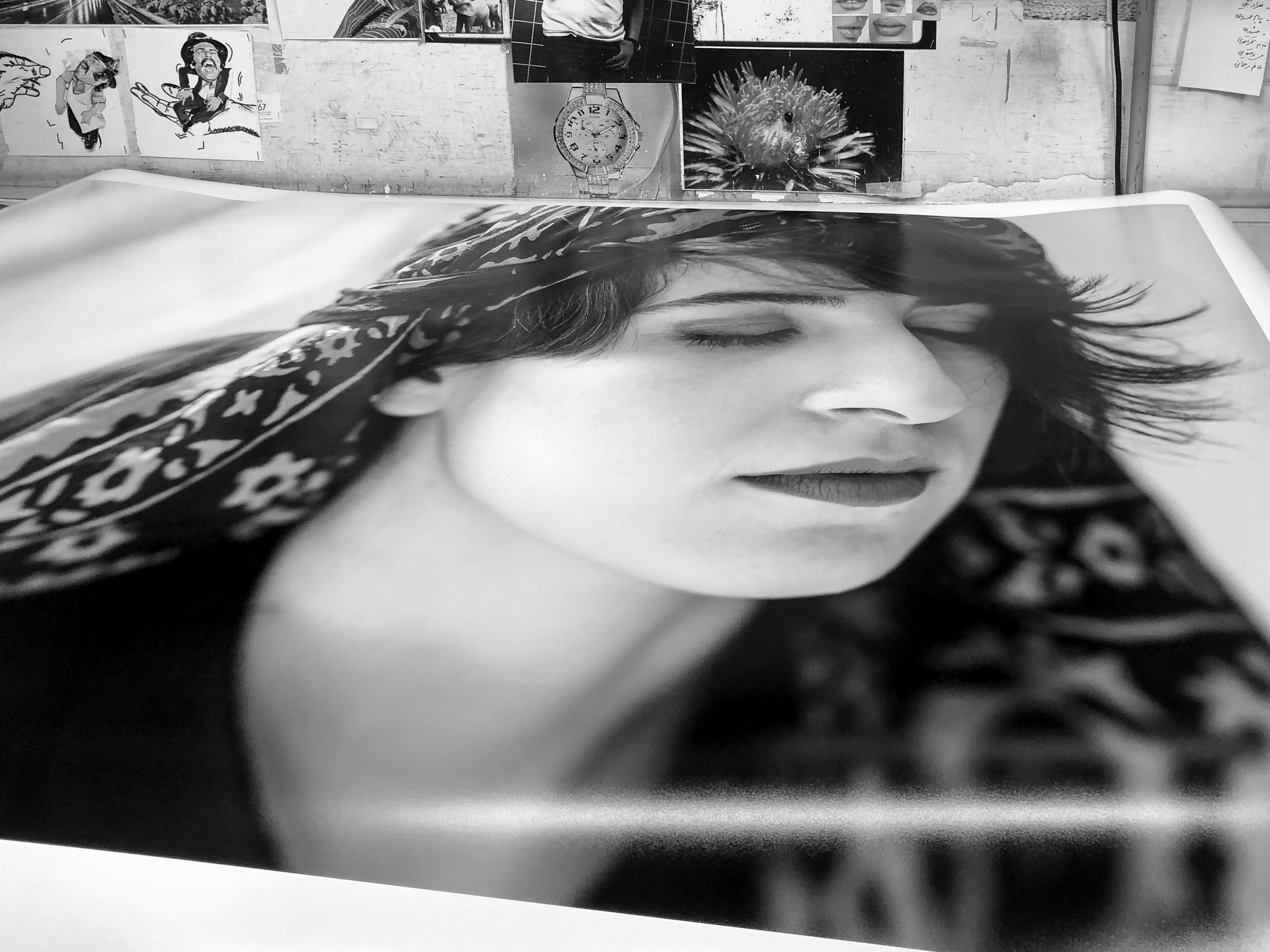
- Framing
When everything is ready, next stop is the framing shop. Choosing the right frames and making sure your vision is possible. Sometimes you have to adapt to the circumstances . It is important to have a framer that has done exhibitions before and can advise on what would be better with the layout of your venue. Even the best professionals make mistakes sometimes and when I picked up the photographs, one of them had a minor mistake made when he glued the picture. He immediately offered to redo it for free. That entailed me doing a new print of the photo and returning there to be framed.
This means that you should always have enough time to spare before the opening, in case something like this happens.
Setting up the exhibition:
Finally the time came to set it all up. Naively I thought everything was done, the wall would be up, so there wouldn’t be anymore surprises. I was wrong of course.
When we asked for the nails and tools that had been promised, there were none to be found! After many arguments and not getting anywhere we decided to look for a shop nearby that would sell tools. Miraculously, we found one, bought the nails, small tools and went back running as the clock was ticking. When we went back they were very happy to show us they had found a Black&Decker which was something at least.
In the meantime, we had asked another person to come and help. He brought a laser machine to measure the walls and put the paintings on the wall according to plan. He had also prepared the graphics for the texts I had set to accompany the exhibition .
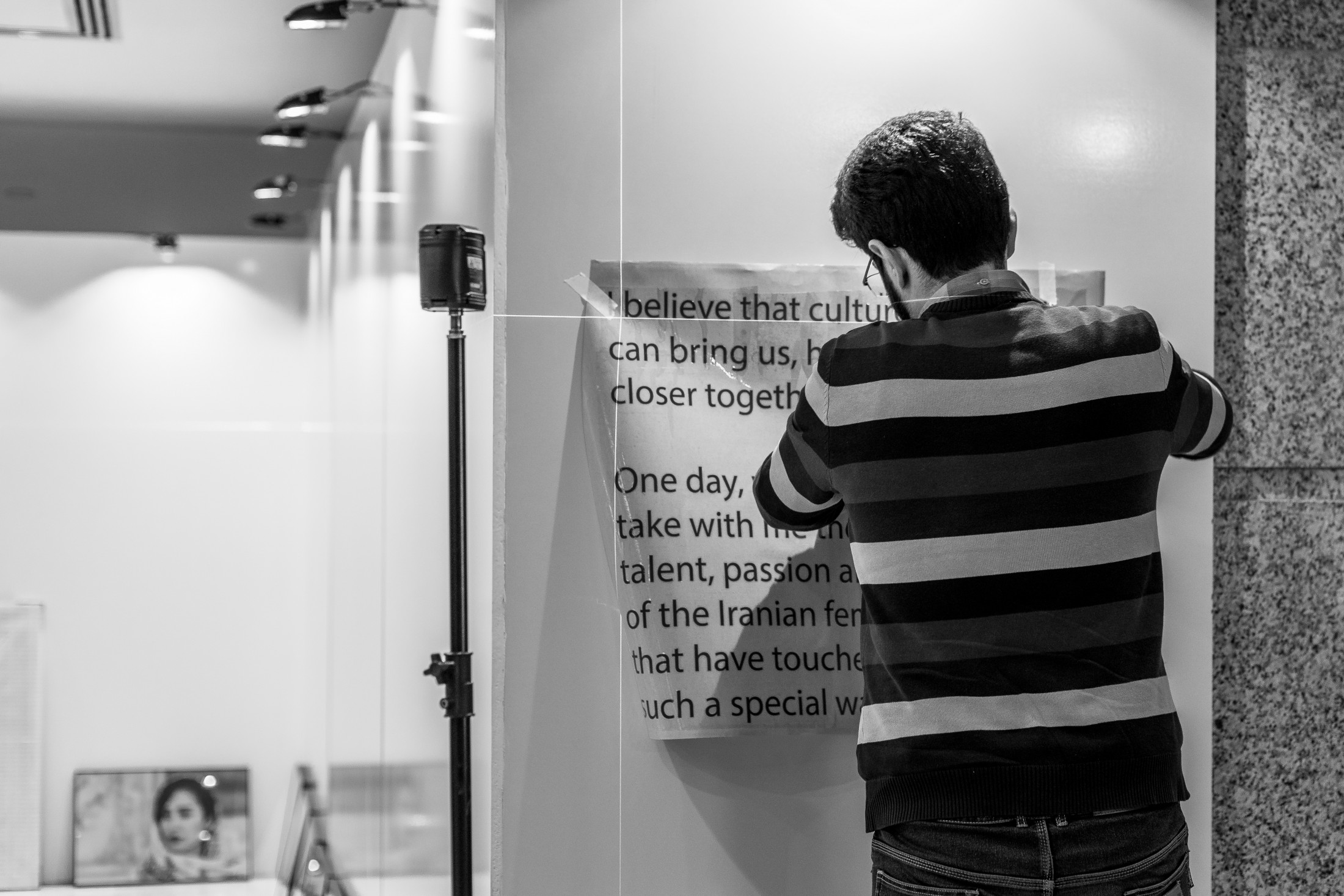
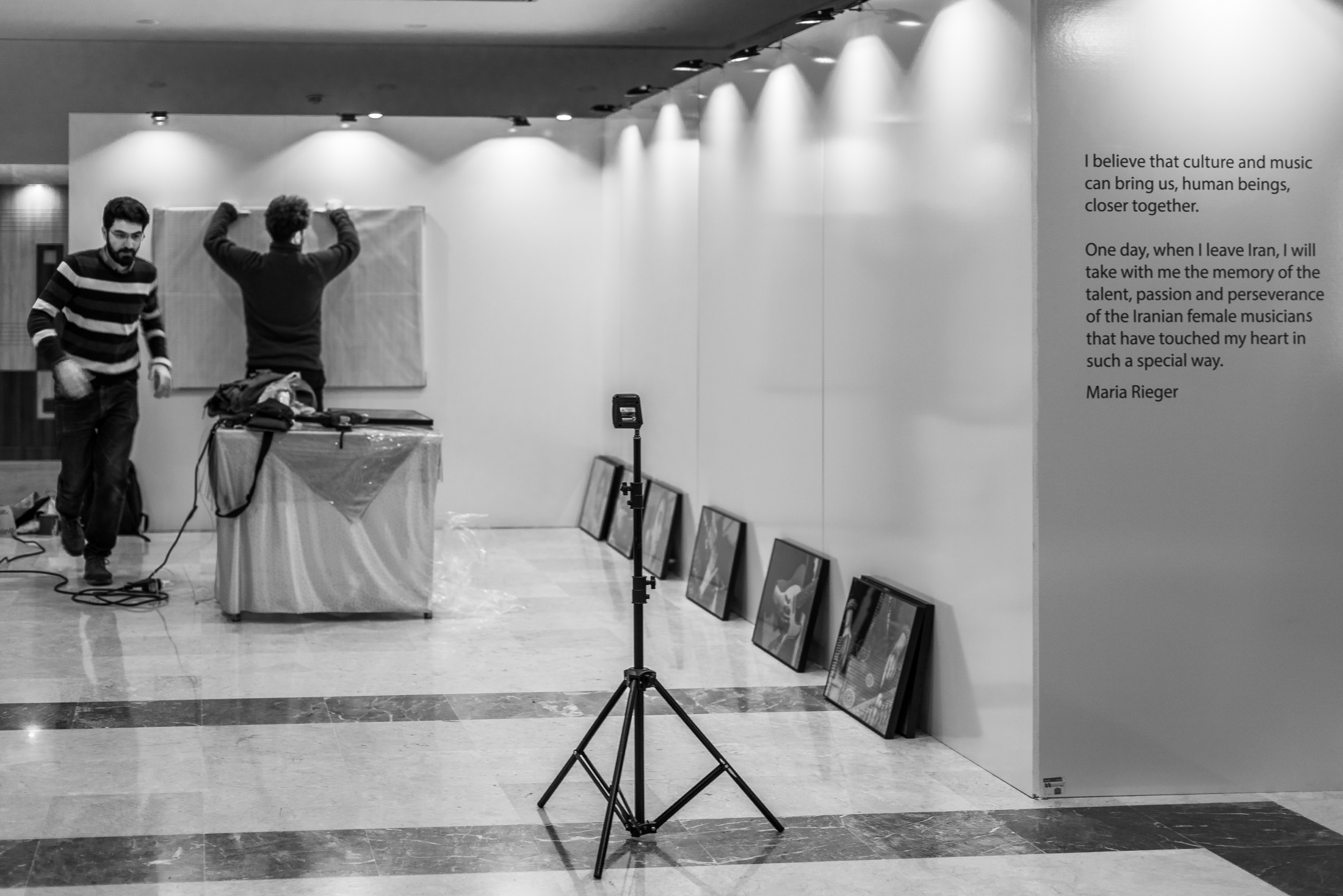
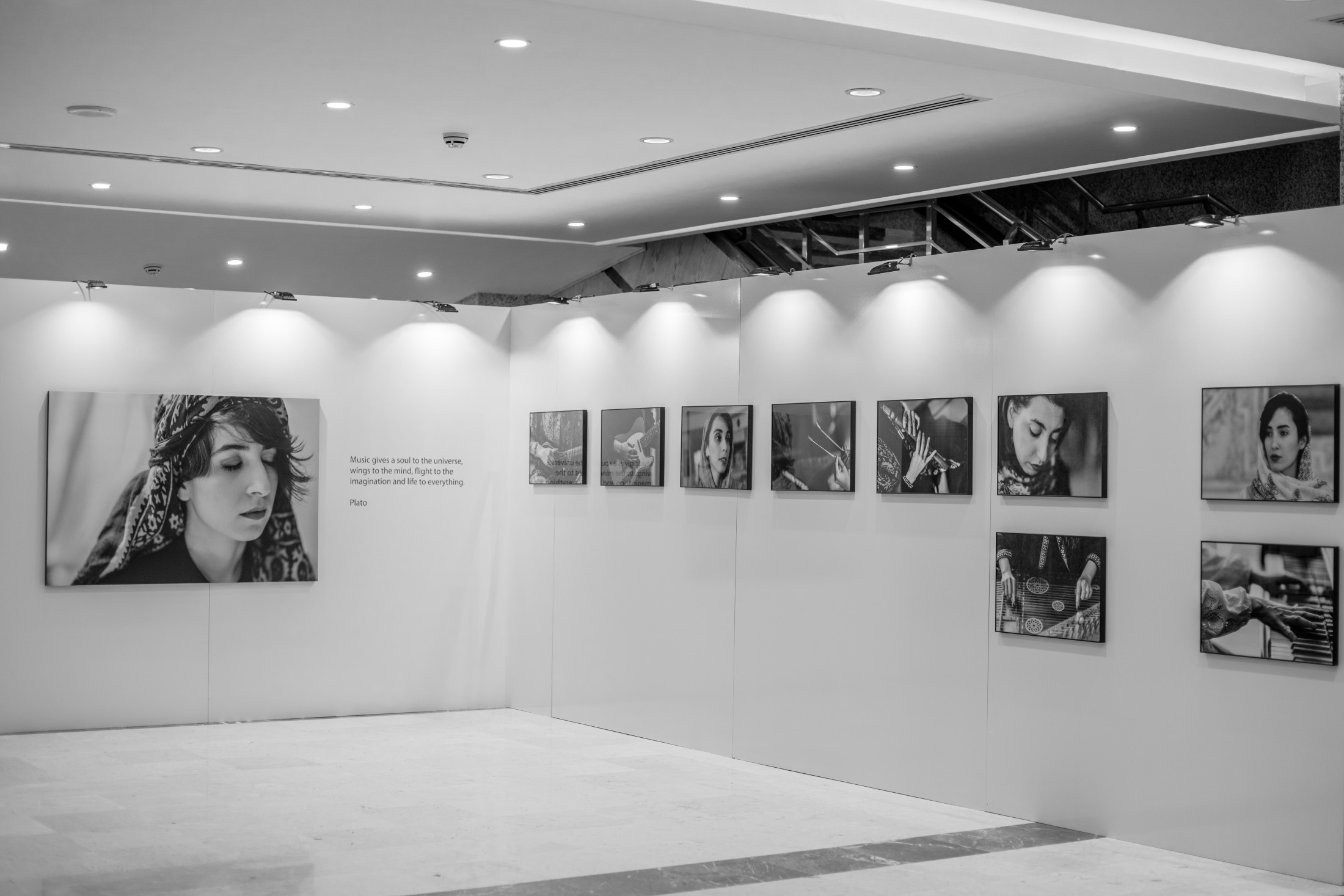
So again, in the end was it worth it? After all the stress and headaches?
This was a particular setting that required much more effort than my first exhibition since I had to do much more.
The reason why I did it in spite of the difficulties, was because this was a unique opportunity to have contact with Iranians of different walks of life and also with the university students. I will always remember the feedback. Some people told me how they could feel the emotion of the musicians when they played, some got very emotional. In Iran, women alone cannot perform on stage. They can if they are members of an orchestra or a choir but not as solo performers unless the audience is all female.
With these limitations, it is difficult for a lot of female musicians to perform as much as they would like. And there is so much talent, I wish things could be different.
When I was ready to pack, a woman approached me. She was wearing a full chador and looking at her, I assumed she was a teacher. She looked in her 40s. There was a hesitation and I smiled to encourage her.
She asked me if I could speak French because her English was not good. I told her yes and we changed to French. She explained she wanted to meet me because the pictures had really touched her. She had been deeply moved by the pictures and also by what I had written.
I thanked her for her feedback and told her I was touched by all the people that had made the same comments. Then I complimented her French and asked if she was a teacher. She smiled and told me that was often what people thought because of her age but she was in fact a student. “Maybe I’m too old” she said. I told her, no, of course not. We are never too old to learn. “So what are you studying?” I asked. French actually, she replied. I smiled and told her it made sense. “And what do you want to do when you finish”, I asked. “I want to be a tour guide and show foreigners how beautiful my country is”, she replied.
That surprised me. Wearing the chador in such a conservative way, usually means a person is very religious. To be a tourist guide you need to be outgoing. She read my mind and told me, she wanted to show foreigners that in spite of being a religious person, she could also be open and be able to be a guide. From Yazd, she told me she was married and had 3 children. Because of the distance, she stayed in a room at the campus and only went home for the weekends. Her husband was very supportive and her children were already teenagers, so she didn’t have to worry leaving them with the father.
Talking with her taught me again that you should really never judge a book by its cover.
And then Covid-19 started spreading and our lives changed. I could no longer do the exhibition at the Austrian Cultural Forum as planned, including a concert by the female musicians to celebrate the International Women’s day.
In spite of it all, I’m glad I got to do this last exhibition and have contact with the people that came to see my exhibition. That is priceless. I often wonder what happened to all these students. I hope that despite the difficult circumstances, they still feel encouraged to finish their studies.
As for the wonderful female musicians, I owe them a debt of gratitude for allowing me a brief and very personal glimpse into their art.
There is also a small video that was made by Saeed Ensafi to introduce my exhibition at the Conference Hall, if you want to take a look.
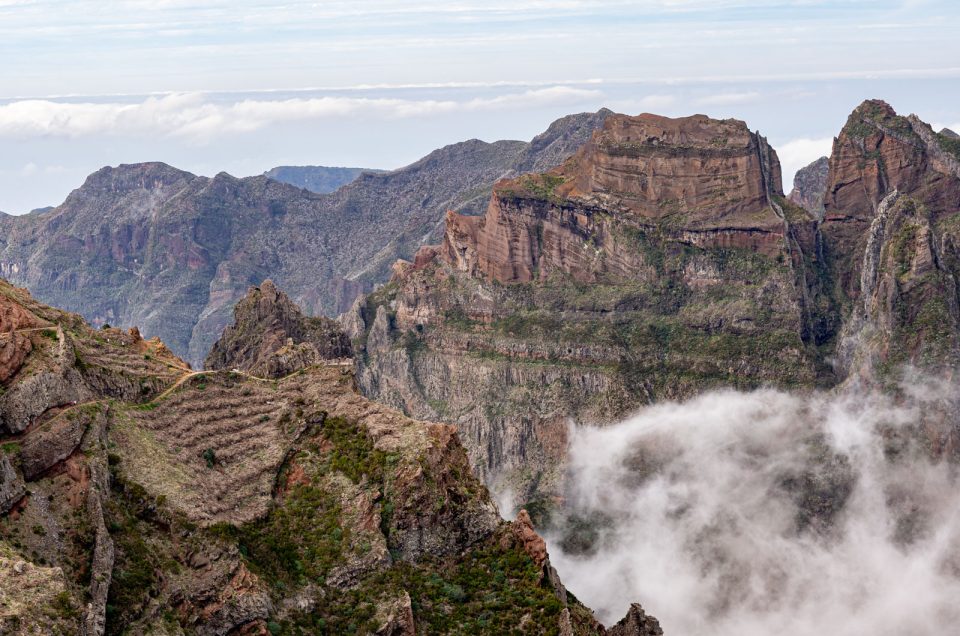
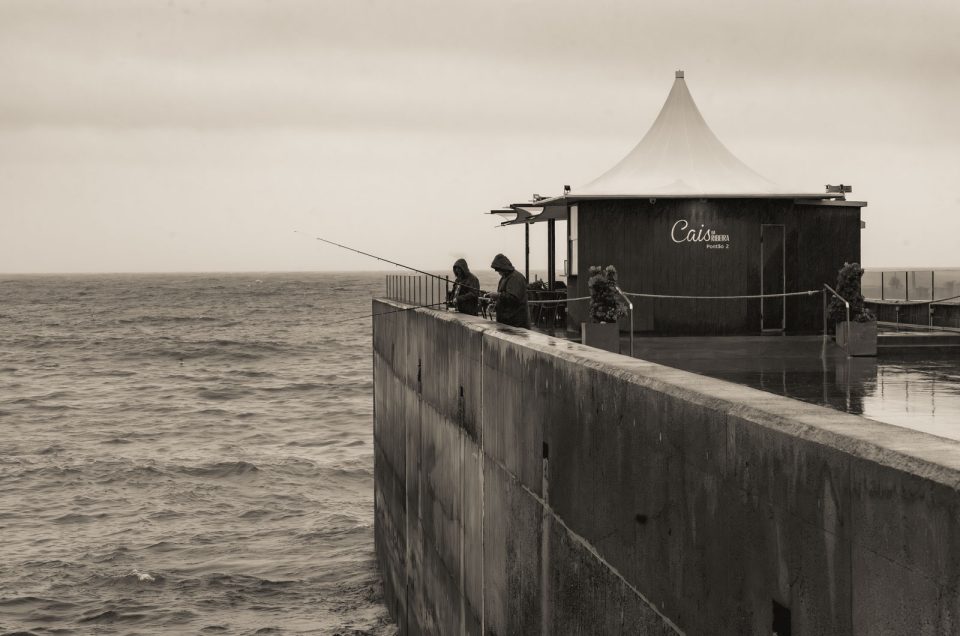
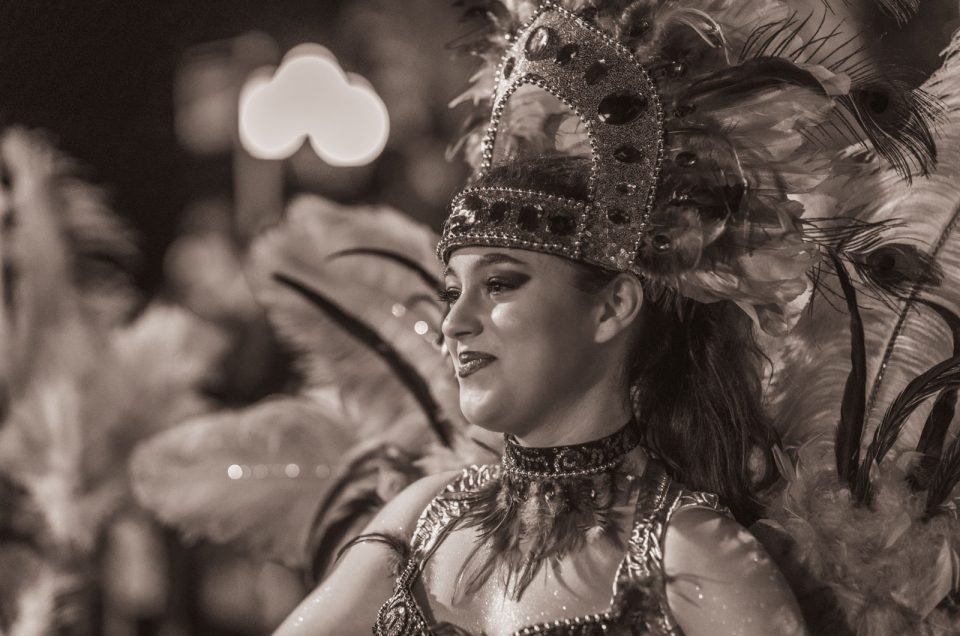

2 Comments
Love your new website! A lot to read and lovely photos from your exhibitions in Teheran. All the hard work pays off at the end. Looking forward to see your future new projects!
😀😘
Thank you Mena! I’m glad you like it and new projects are already planned and being worked on. In due time I will talk about that.